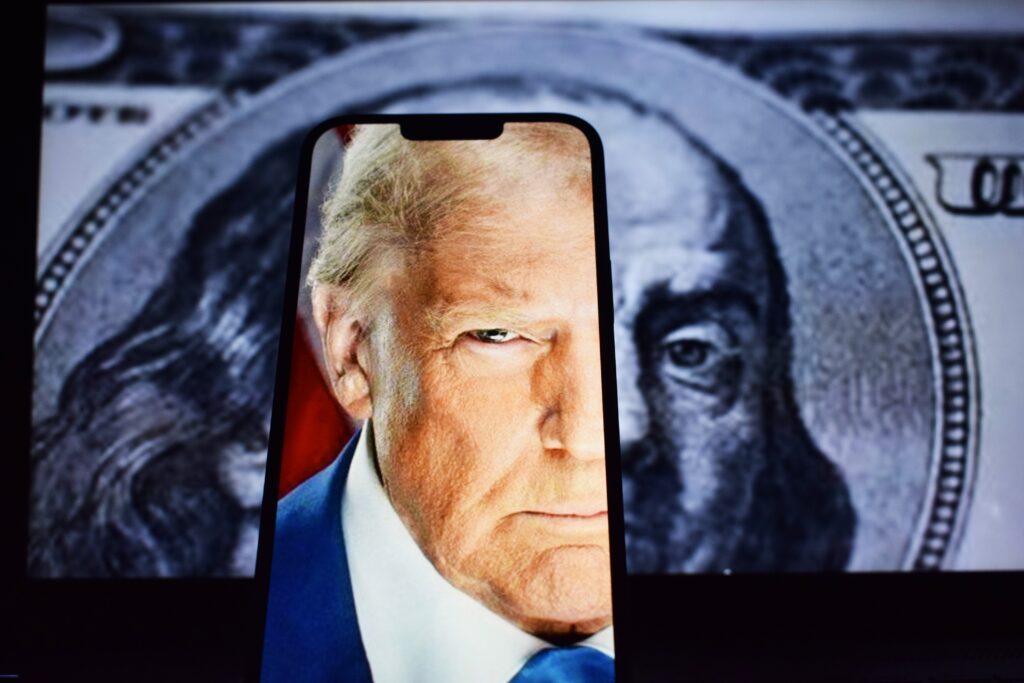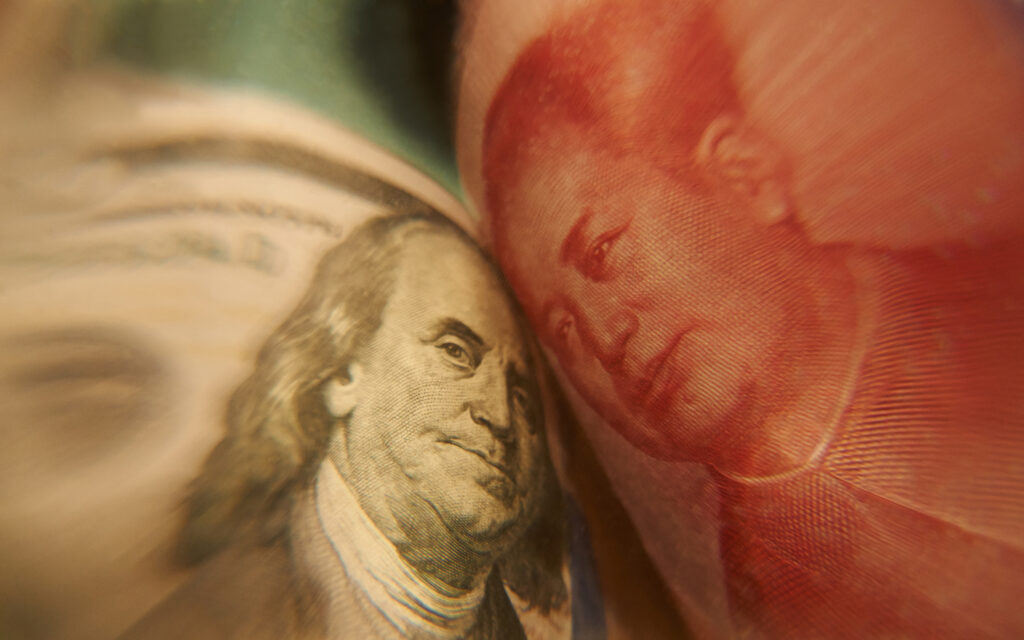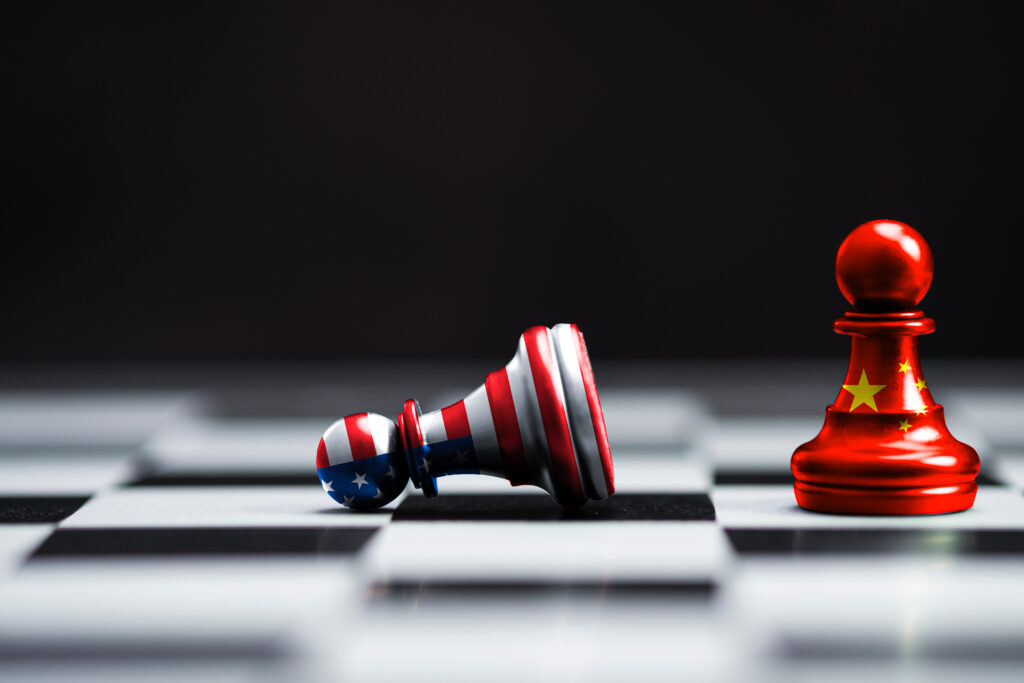As the world sides with China, the US closes in on itself with tariffs, threats and nationalist delusions

Analysis by: Žikica Miliošević
What is Donald Trump really up to?
After Donald Trump was elected President of the United States, the markets reacted with optimism – indexes surged and investor confidence was widespread, as is usually the case when a Republican president promising tax cuts comes to power. In the first few days, Trump took on the social phenomena that had helped him get elected: woke ideology and similar trends. It appeared that the socially conservative president was doing exactly what was expected.
Then came 2 April – “The Liberation Day”, as Trump called it, in a strangely socialist tone. He published tables of tariffs for each individual country, under the pretext that these were “half the tariffs those countries had imposed on America, and it’s only half because I’m a good guy.” In fact, it turned out to be some sort of calculation of deficit, imports and exports, and had nothing to do with any actual tariffs imposed on the US. The markets slipped into depression. A week later, he announced a 90-day pause “to find an agreement”.
Except with the Chinese, who responded in kind.
Trump, after all, is the creator of the famed concept of “the art of the deal”, which he transferred from business into politics: a mix of mercy, power, open threats, bluffing, blackmail, outrageously inflated demands, followed by sudden calm and benevolence… At heart, the President is a real estate businessman, and this is, for him, just one big deal.

Neomercantilism in Action
Trump 2.0 is far more aggressive than Trump 1.0 – he now has an entire echelon of “Trumpists” behind him, who have become an ideology of their own within the Republican Party. Still, it seems that Trump sees some things differently from economists. Namely, it is entirely logical for the United States to run a trade deficit – those who have money tend to buy more from producers than those who don’t. Take any village market: a wealthy man will arrive and buy everything he needs, while the vendor, with the money earned, will only be able to purchase what he can afford.
But Trump believes that a trade deficit is the worst possible outcome and is determined to eliminate it with every country, forcing each one to buy whatever America has to offer. Interestingly, Trump only included the goods deficit in his calculations, completely ignoring the American surplus in services, which the US holds with virtually every country in the world.
Trump may succeed in preventing those he disapproves of from selling cheaply in America – but for China, having the “rest of the world” on its side is already enough
To make matters worse, Trump does not think this is enough. When the EU offered zero tariffs on many goods as an “act of goodwill”, his mouthpiece Peter Navarro announced even more severe threats – stating that America’s ultimate goal was the removal of “non-tariff barriers”. He specifically mentioned eliminating VAT and scrapping EU food safety regulations.
This is dangerous for two reasons – VAT is one of the main ways to fund state budgets and, although introduced in some countries only in the early 21st century, generations of Europeans have never known life without it. Its removal would seriously undermine EU fiscal policy. Secondly, removing food safety standards would flood European supermarkets with GMO-packed products, chlorinated chicken, chemically treated eggs, hormone-laden beef, and juices containing emulsifiers that are toxic and carcinogenic… You name it!
European budgets would be devastated, and Europeans would face both an obesity epidemic and a surge in various costly-to-treat diseases – especially cancer.
In conversation with Sir Keir Starmer, Trump even stressed that the UK must abolish hate speech penalties to get a deal – free speech or no deal!
Trump also claimed that the EU was created to harm the United States and insisted it must purchase $350 billion worth of energy from the US each year, “plus, let’s settle what’s still outstanding.” We’ve already seen how disoriented the German economy has become now that cheap Russian energy can no longer power its industry, and we know that many countries prefer Russian gas. Others rely on gas from Algeria or Qatar, and oil from other parts of the world, often cheaper than American oil.
Striking a deal with the US is fine, but if the cost of buying energy from the US exceeds the losses from not entering the American market, then – no deal. American goods may be popular, but they’re not irreplaceable. If the price is too high, it’s easier to buy from the other side of the world.
Fencin’ USA
There was once the famous song Surfin’ USA, which made us all fall in love with post-war America – the nation that defeated Nazism, and the land of consumer and cultural freedom. But now, it might be more accurate to sing Fencin’ USA – because the way things are going, America is fencing itself off. Trump doesn’t seem to mind – he even said that if other countries don’t like America, they shouldn’t trade with it. The US has the largest market in the world, and everyone wants access to it. Yes – but at what cost?
Trump is a man of the “old school”. When he was 20, it was 1966 – the USSR and Eastern Europe were practising socialism, China was undergoing the Cultural Revolution, and only 21 years had passed since Europe’s bloody devastation in the Second World War. At that time, America truly was the world’s undisputed superpower. It seems that Trump remains somewhat trapped in that vision of America – as the country everyone wants to move to (and should be kicked out of if they’re unwelcome), and the nation everyone is desperate to trade with.
Reality looks a little different. Italy in 2025 is no longer the 1966 backdrop where American tourists were worshipped as gods from Roman Holiday. Every country now offers better social and healthcare systems than the US – not to mention railways. Nobody buys American cars? Sadly, they’re inferior to their European, Japanese, or Korean counterparts. Chinese electric vehicles are in a league of their own, poised to conquer the global market. Trump may manage to block those he disapproves of from selling cheaply in America – but China already has the “rest of the world” on its side.
Let’s not forget the emotional factor: threats to Denmark over Greenland and to Canada about annexation have deeply offended long-standing allies. These sparked boycott movements against American goods, which then spread to other countries. In many places, people now check where a product comes from before adding it to their shopping basket.
The US tourism industry is set to lose $90 billion due to fewer visits this year – a year that was meant to break records. Canadian travel to the US has dropped significantly, and Europeans are also choosing to explore other parts of the world instead of risking a ruined holiday at an American border checkpoint. There’s always Canada, or the vast landscapes of Asia, Africa, and Latin America – where money can be spent more peacefully. A paradox, considering America once represented the ultimate travel dream.
What’s most troubling for Trump is that in the trade war with China – it seems the whole world is cheering for China

Will Manufacturing Return to the US?
Trump has long stated he is financially focused on two key goals – bringing manufacturing back to the United States (so-called “re-shoring”) and balancing trade with every country to zero. But bringing factories back to America will be a tricky business. Some things can be brought home, such as high-tech industries (automotive giants are already shifting parts of their production from Mexico, Japan, and Canada to the US – Honda, Nissan and others have done this; batteries and chips can be produced in the US too).
However, labour-intensive industries will not be returning. A Chinese-made AI clip mocking Trump shows overweight Americans sewing tracksuits in sweatshops – a blunt reminder of just how unrealistic that prospect is. Giants are more likely to move production from China to India or Africa than to their own backyards. A “patriotic capitalist” is an oxymoron.
The Economist recently calculated that if Apple were to relocate its entire manufacturing to the US, the iPhone would cost $3,500 – unaffordable for most consumers.
If manufacturing isn’t coming back, could the trade balance at least be levelled? Trump views China as the ultimate threat – a future global leader that must be stopped. He believes action must be taken now, or it will be too late. And indeed, this may well be the last moment to curb China’s rise – but not like this.
It would be far more effective for the US to invest in innovation and cutting-edge technology, rather than forcing the world to buy inferior goods just to bring the trade deficit to zero.
Back in 1975, could anyone have forced you to buy a Soviet-made television instead of one from EI Niš, Gorenje or Čajavec? That’s how American cars and electronics look today compared to their Chinese counterparts – and the gap is only widening.
Markets responded accordingly. Trump briefly exempted Chinese electronics and components from tariffs, but quickly stated this was only temporary and that new tariffs were on the way. The Economist had already warned on the cover of The World in 2025 that he was “the tariff man” – but no one quite expected this.
Especially amid allegations from Democrats of murky dealings – they claim the market dip, followed by Trump’s statement that “now is the time to buy”, and his later decision to freeze tariffs, earned his associates billions. An investigation into insider trading has reportedly been launched.
Recession Ahoy?
During her presidential campaign, Kamala Harris warned that Donald Trump would drive the US economy into recession by the summer of 2025. The current odds stand at around 50%, fluctuating between 45 and 65%, depending on Trump’s actions on any given day. Should he dismiss the Federal Reserve Chair, the likelihood would increase further.
Worst of all, no one knows what might happen tomorrow – because no one knows what Trump, who governs more like a monarch, will do next. Will tariffs on China be 145%, 245%, or even 555%? At a certain point, it becomes meaningless – a de facto trade embargo.
And China will not back down. It has a plan – it always does. With its tradition of five-year strategies, China has already pivoted towards BRICS countries, and now ties with the EU are beginning to thaw.
What’s most concerning for Trump is that in this trade war with China – it seems everyone is rooting for China.